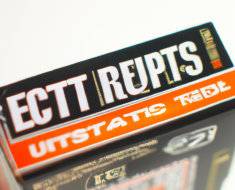Ballistic Gel Tests: Which Ammo Performs Best?

Ballistic gel tests have become a popular method for evaluating the performance of different types of ammunition. This method provides valuable insights into how various bullets behave upon impact, helping shooters and law enforcement officers make informed decisions about which ammo to use in different scenarios. In this article, we will explore the importance of ballistic gel tests and analyze which types of ammo perform best based on the results of these tests.
The Importance of Ballistic Gel Tests
Ballistic gel tests simulate the density and consistency of human or animal tissue, making them an ideal medium for testing the terminal performance of bullets. By shooting into ballistic gel blocks, researchers can measure factors such as penetration depth, expansion, and fragmentation of different types of ammunition.
These tests provide valuable data on how bullets interact with soft tissue, helping manufacturers improve their products and shooters choose the most effective ammo for self-defense or hunting purposes. Law enforcement agencies also rely on ballistic gel tests to determine which ammunition will be most effective in stopping a threat while minimizing the risk of collateral damage.
Types of Ammo Tested
Various types of ammunition are commonly tested in ballistic gel, including:
- Hollow point bullets
- Full metal jacket bullets
- Frangible bullets
- Steel core bullets
- Lead core bullets
Each type of ammo has its own characteristics that can significantly impact its performance in ballistic gel tests. For example, hollow point bullets are designed to expand upon impact, creating a larger wound channel and transferring more energy to the target. On the other hand, full metal jacket bullets are known for their deep penetration but limited expansion.
Results of Ballistic Gel Tests
When comparing the performance of different types of ammunition in ballistic gel tests, several factors are taken into consideration:
- Penetration depth: How far the bullet travels into the gel block before coming to a stop.
- Expansion: The degree to which the bullet mushrooms or expands upon impact.
- Fragmentation: Whether the bullet breaks apart into smaller pieces upon impact.
- Tissue damage: The extent of damage caused by the bullet’s impact on soft tissue.
Based on these criteria, some types of ammo consistently outperform others in ballistic gel tests. For example, hollow point bullets often demonstrate superior expansion and tissue damage compared to full metal jacket or frangible bullets. This makes them a popular choice for self-defense rounds.

Case Studies and Statistics
A number of case studies and statistical analyses have been conducted to determine which types of ammo perform best in real-world scenarios. One study found that hollow point bullets were more effective at stopping threats quickly compared to full metal jacket rounds. Another study showed that frangible bullets were less likely to over-penetrate soft targets, reducing the risk of collateral damage.
In addition to case studies, statistical data from law enforcement agencies and shooting incidents can provide valuable insights into which types of ammunition are most effective in stopping threats with minimal risk to bystanders. These data-driven analyses help inform decisions about which ammo to use in different situations.
Summary
In conclusion, ballistic gel tests play a crucial role in evaluating the performance of different types of ammunition. By simulating real-world conditions and measuring factors such as penetration depth, expansion, and tissue damage, these tests provide valuable insights into which types of ammo perform best in various scenarios. From hollow point bullets that excel at creating large wound channels to frangible rounds that minimize collateral damage, each type of ammo has its own strengths and weaknesses that can be assessed through ballistic gel testing. By analyzing case studies and statistical data, shooters and law enforcement officers can make informed decisions about which ammo to use based on empirical evidence rather than anecdotal claims.






